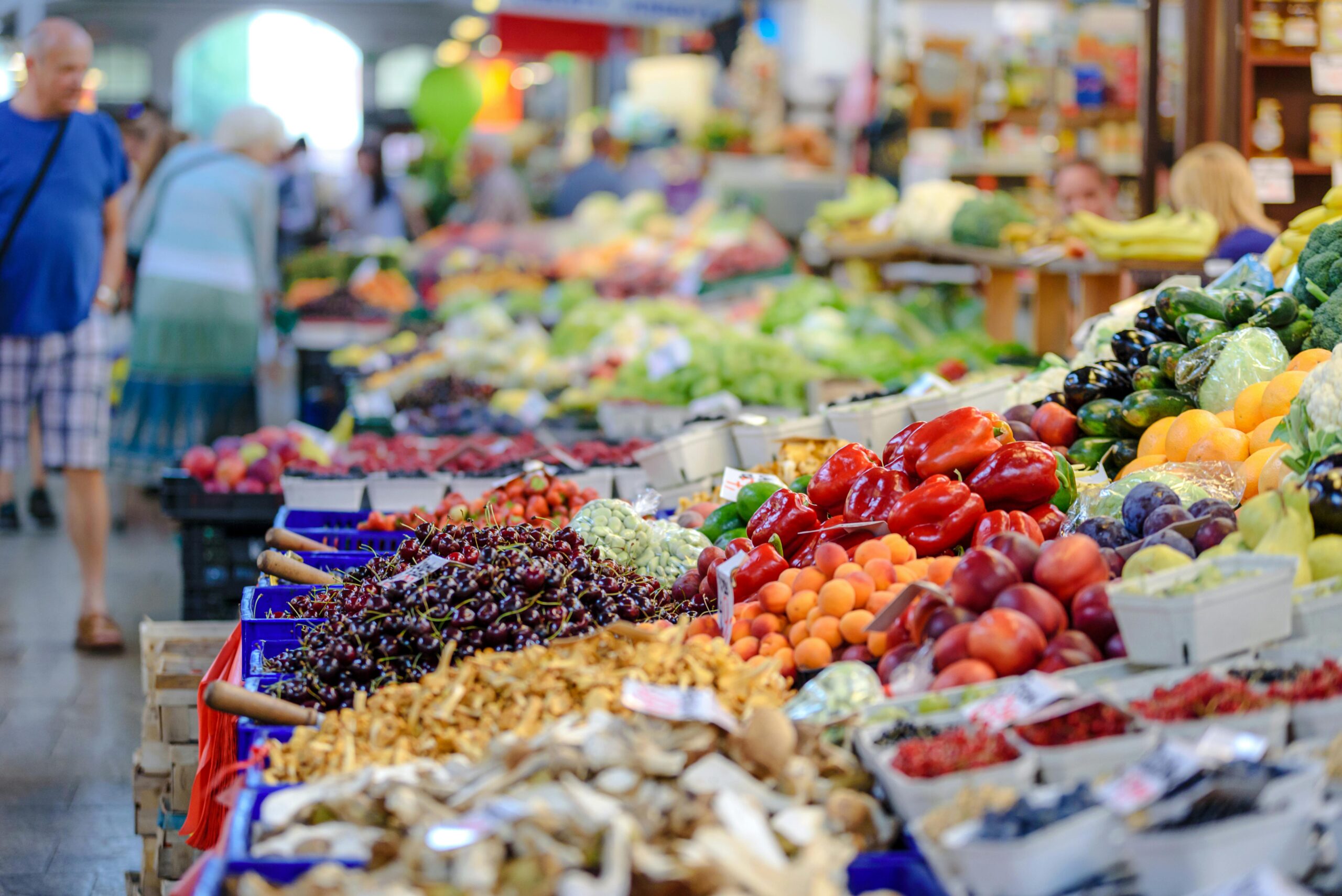“Eating healthy” can be a loaded term, especially when the USDA recommends half of our plate be filled with fruits and vegetables. At the grocery store when choosing between organic, domestically-grown, imported, canned or frozen, it can be confusing how to get the best value and keep a healthy pocketbook.
But there’s also another thing to consider: the level of pesticide residue on these fruits and veggies.
Consumer Reports has looked at seven years of data from the Department of Agriculture to get a sense of risk and identify which produce items to shy away from. One major find, says James Rogers, Consumer Reports director of food safety research and testing, is only 20% of the produce tested in that database charted risky levels of pesticides.
For those higher level of risky foods, he recommends consuming only half the amount or replacing it with a less risky produce item. And a main rule of thumb: alway wash your veggies, even if the package says they’re pre-washed.
Rogers spoke with Texas Standard on the most vulnerable times in a person’s life where pesticides can be more dangerous. Listen to the interview above or read the transcript below.
This transcript has been edited lightly for clarity:
Texas Standard: Well, so what produce items did you look at and how did you determine the amount of risk?
James Rogers: So there were a total of 59 different foods that were in the data set that we obtained from the USDA. Those included cucumbers, eggplant, green beans, onions, spinach, basil, etc.
And what we did is take that data and we set up a risk determination algorithm. What that means is we looked at for each food type, the number of pesticides detected in each sample, the frequency of detection – which means how many samples were positive – the concentration of each pesticide, and the individual toxicity of each pesticide.
Using that calculation, we then looked at the data, gave a score for each food, and then we determined whether the pesticide or pesticides there were causing problems and how to rank the food against each other.
So what were your overall findings?
So about 20% of the foods that were in that database were actually significantly “risky.”
And what that means is that when you do that calculation, either a number of the samples were positive, which means you have a better chance of picking that up when you go to the grocery store, or the concentration of the pesticides were so high that that increased the risk to consumers of consuming that food. And so that was about 20% of the samples.
About two thirds of the samples were not in that real risk category. And so we consider that good news.
What about frozen or canned vegetables? What do we need to think about and look out for there in terms of pesticides?
Well, the findings that we saw in this study extends to those products, also. We did not differentiate them in our study. And so we’re going to consider those the same as if they were fresh.
Well when it comes to pesticides, you note that some of the most concerning times to worry about exposure is during vulnerable times, like pregnancy or early childhood.
Yes. So if you look into the public health data, what you’ll see is that when you are a pregnant person, a fetus, when you’re young and you’re developing and you’re growing, those are the times when you’re much more susceptible to the effect of these pesticides and the diseases that they can cause.
When you’re in these vulnerable classes, you need to take as much caution as you can. And so our work has shown or demonstrated with this story that organic fruits and vegetables are safer for these sensitive classes.
Well, because organic can be so expensive compared to non-organic, not everyone can afford a fully-organic produce diet. What do you recommend most in terms of organic fruits and vegetables?
So yes, we are recommending that especially for the riskier foods that we found in our study, that consumers consider eating organic.
There are a number of different types of produce that are more risky. So for instance, green beans, watermelon, kale, and white potatoes. If you notice in the, charts, in the tables that we’re providing, we’re saying that while you can eat the riskier ones, that the amount of them that you can eat can go down to a half a serving a day. However, if you switch to organic, you should be able to eat more of those different fruits and vegetables, because in the research that we did, it demonstrated that there were fewer or less concentrations of pesticides in there.
And yes, they can be expensive, but what we are suggesting is that you consider substituting produce that were less risky. So snap peas instead of green beans, cantaloupe instead of watermelon, cabbage or dark green letucces instead of kale and sweet potatoes instead of white potatoes.
And sometimes organic produce is actually cheaper than conventional produce, especially if you can catch a sale, buy in bulk, or freeze them. Because if you catch them on the sale, that means you have a stash in your freezer that you can tap on later on down the road.
Now, that’s good advice. Well, you mentioned green beans. Imported produce seems to be a significant finding. What can you say about that?
So what the data showed us is that there were a number of different produce items, especially some from Mexico, that carry riskier levels of pesticide residues.
Now, that’s not that surprising, because in many countries that export food to the United States, they may or may not have the same food safety regulatory system or an equivalent one that we do. And so it was not that surprising, but it was a little sad, because sometimes these countries are the only countries that can supply these fruits and vegetables during certain times of the year.
Right? Those winter vegetables. Well, overall, you find that the recommended rule of thumb is just to wash your produce in water. What about the veggies you find in bags that say “pre-washed”? Should we still wash those, too?
Well, we did recommend to wash your produce to remove some, but not all, of the pesticide residues. We still recommend that even if it says “pre-washed,” that you go ahead and wash it again.
Many times when they say “pre-washed,” they’re talking about 100 gallon tubs of fruits and veggies that are all mixed together and can cross contaminate each other. So that doesn’t adhere with pesticides per se, but I would rather wash it at home because I can trust how I wash it and how well I wash it now.















